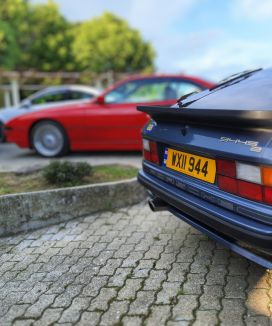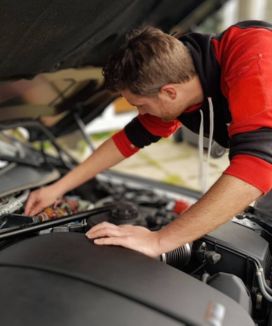Will The Saab 9-5 Aero (2nd Gen) Become a Classic?
Table of Contents
Table of Contents
Saab was a brand steeped in aviation heritage, carving a unique flight path through the automotive skies, only to vanish into the clouds, leaving behind a trail of what-ifs and if-onlys.
It was a marque synonymous with innovation, quirkiness, and a steadfast refusal to follow the herd. But what if, among the remnants of Saab’s final descent, there existed a hidden gem, a potential treasure trove for car enthusiasts and investors alike?
Enter the second generation (YS3G) Saab 9-5 Aero. The last flagship to take off from Saab’s runway before the curtains fell.
Why should this particular model catch your eye and fuel your investment dreams? It’s not just a car; it’s a piece of automotive history, a symbol of what could have been, and potentially, a canvas for future value.
But is it merely nostalgia that elevates the Saab 9-5 Aero, or does it possess intrinsic qualities, making it a bold yet worthy venture in the collector’s market?
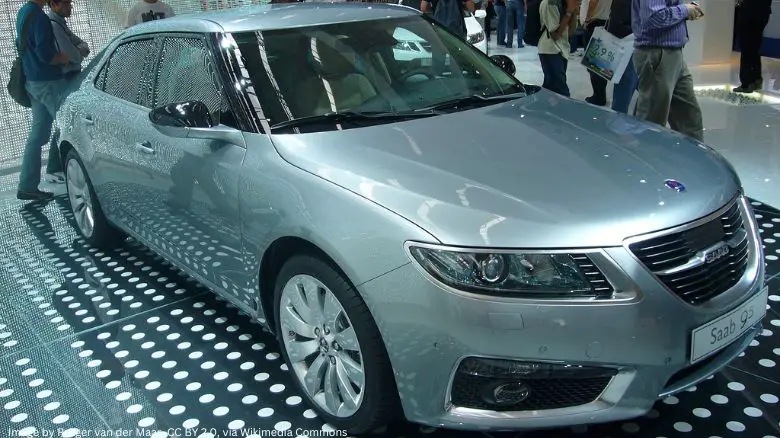
We’re going to uncover the allure of this enigmatic machine, delving into its history, rarity, and the driving experience it offers.
Could this be your ticket to a high-flying investment? Let’s find out.
The Fall of Saab
Once a beacon of innovation and Swedish engineering, Saab’s journey in the automotive landscape was as distinctive as it was tumultuous.
Born from the ashes of the aerospace industry, Saab soared through the skies of success, only to face a gradual descent into financial turbulence.
Remember the sleek Saab 900 or the trailblazing 9-3? These were models that epitomized Saab’s unique approach to design and performance. However, beneath the veneer of success, the storm clouds were gathering.
The turn of the millennium saw Saab grappling with economic headwinds.
Mired in losses and hampered by a series of ownership changes, the brand struggled to retain its altitude. The final blow came in 2011, with Saab declaring bankruptcy, leaving a void in the hearts of enthusiasts and a fleet of orphaned cars in its wake.
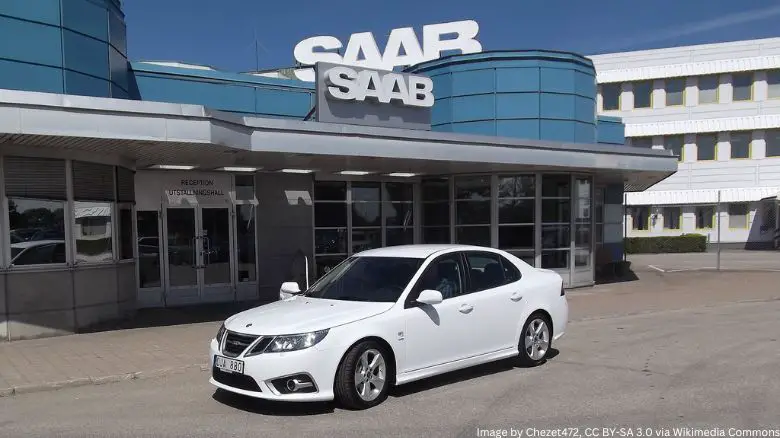
But could this fall from grace be the very catalyst that propels the Saab 9-5 Aero into the collectors’ stratosphere?
When a brand with a cult following like Saab departs, it wraps itself in nostalgia, often emerging with vastly increased value and desirability. Consider the tale of the DeLorean DMC-12.
Much like Saab, DeLorean faced its share of financial woes, ultimately folding in the early 1980s. Yet, today, the DMC-12 is a sought-after classic, with values steadily climbing.
Of course, the Saab 9-5 doesn’t have the on-screen prowess that the DeLorean had, but could it follow a similar trajectory at a lesser scale?
Nostalgia, coupled with rarity, can be a potent formula in the automotive collector’s market. It turns cars into memories, tangible remnants of a bygone era.
Could this car, born from the embers of Saab’s fall, truly ascend as a bold investment opportunity? Time to explore, investigate, and perhaps, even dream a little.
Unveiling the 2011 Saab 9-5 Aero
In the final chapters of Saab’s storied legacy, the 2011 Saab 9-5 Aero emerged as a testament to the brand’s relentless pursuit of innovation and distinctiveness.
But what exactly makes this particular model so intriguing in the automotive echo chamber?
Design & Features
One immediately senses the convergence of aviation heritage and automotive ingenuity with the 9-5 Aero.
The bodywork, reminiscent of a jet’s fuselage, the distinctive ice-block headlamps, and the assertive yet elegant grille – all signature elements that encapsulate Saab’s design ethos.
Inside, the cockpit-inspired dashboard and the Night Panel feature, reducing dashboard lights for less distraction, epitomize Saab’s aeronautical roots.
It’s not just a car; it’s an experience – a harmonious blend of aesthetics and functionality.
Performance Capabilities
The second-generation Saab 9-5 Aero was offered with a choice of engine options:
- 2.8L V6 Turbocharged Engine:
- This was the most powerful engine available for the Aero trim. It was a 2.8-liter turbocharged V6 petrol engine, producing around 300 horsepower and 400 Nm of torque. The engine featured direct fuel injection and variable valve timing, enhancing both performance and efficiency.
- 2.0L Inline-4 Turbocharged Engine:
- The Aero trim was also available with a smaller, 2.0-liter turbocharged inline-4 petrol engine. This engine was more fuel-efficient, while still delivering a dynamic driving experience, producing around 220 horsepower.
These engines were paired with either a manual or automatic transmission, and the V6 Aero models featured advanced all-wheel-drive systems to enhance stability and performance.
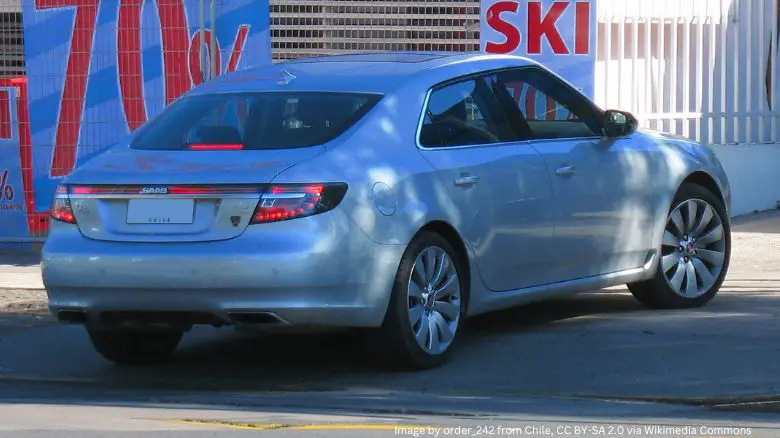
Reception & Current Standing
Upon its release, the Saab 9-5 Aero garnered admiration for its blend of performance and luxury, its unique design cues, and its homage to Saab’s heritage.
However, it was a swan song in a turbulent time, and the financial woes of Saab overshadowed the Aero’s potential.
Today, it stands as a symbol of unfulfilled promise, a diamond in the rough, with enthusiasts and collectors beginning to recognize its allure and potential.
Rarity & Uniqueness
In the vast expanse of the automotive cosmos, what transforms a vehicle into a collector’s treasure? Rarity and uniqueness – two elements that guide enthusiasts in their quest for the next acquisition.
So, where does the 2011 Saab 9-5 Aero fit into this?
Production Numbers & Availability
There were a total of 3,634 second generation Saab 9-5 Aeros built. Just 907 9-5 Aeros fitted with the V6 engine were manufactured, making it the most desirable.
The turmoil surrounding Saab’s final days saw a restrained production output, making each Aero model a rare embodiment of Saab’s swan song.
Few in numbers but rich in character, these cars are scarce, heightening their allure for those seeking exclusivity.
Full details on the second generation Saab 9-5 production numbers can be found here.
Unique Design Elements & Features
The 9-5 Aero wasn’t just another car; it was Saab’s heart and soul on wheels. Its exterior, a blend of aerodynamic curves and assertive lines, echoed the brand’s aviation heritage.
Inside, a cockpit-inspired dashboard, ergonomic seats, and the aforementioned Night Panel feature set it apart, giving each drive an intimate connection with Saab’s spirit.
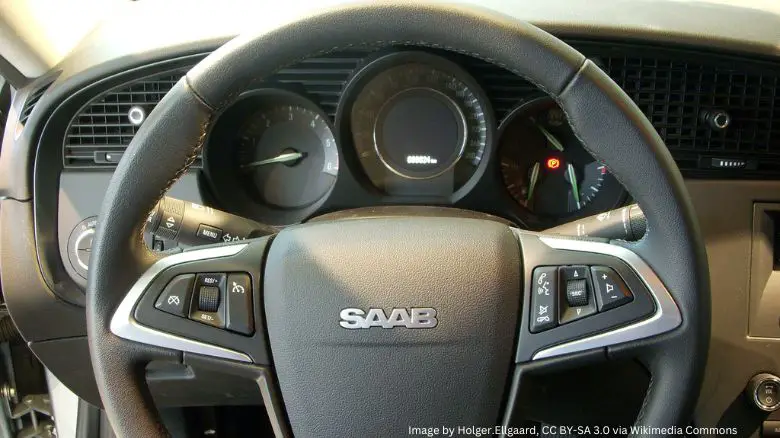
Market Trends – Tracking the Saab 9-5 Aero’s Value
Navigating through the realms of car investments requires a discerning eye on the ebb and flow of market values.
So, how does the Saab 9-5 Aero fare as it sails through the currents of the automotive marketplace?
Current Market Values & Past Trends
The Saab 9-5 Aero has maintained relatively stable values in recent years, with a minor dip of approximately 5% between 2022 and 2023.
The allure of possessing a piece of Saab’s final act can lead a prospective buyer to secure a decent example within the $10k – $12k range, a price tag that encapsulates both its heritage and rarity.
You can expect to pay a premium for the V6 powered Aero, however, and prices of these models head north of $15,000.
Comparative Analysis
When juxtaposed against its contemporaries, the Saab 9-5 Aero presents an intriguing proposition.
While some models from renowned brands may showcase steeper appreciation curves, the Aero’s steady valuation and unique provenance lend it a different kind of allure.
Given its relative young age in the modern classic market, it’s a silent contender with a narrative enriched by its brand’s history and its scarcity in the market.
Opinions & Future Forecasts
An increasing number of automotive pundits have their gaze fixed on this unique Saab. While the general market trajectory showcases a slight decline recently, experts perceive potential in the Aero’s stability.
The rarity factor, coupled with Saab’s defunct status, renders the Aero a candidate for future value appreciation.
“As the reservoir of previously underappreciated collector cars dried up sometime in early 2021, people started to notice Saabs as a value proposition”
Hagerty Insider
It’s a waiting game as collectors and enthusiasts ponder the Aero’s potential ascent in the automotive investment skyline.
Is the Saab 9-5 Aero’s stable market presence a precursor to a future surge?
Driving Experience – Behind the Wheel of a Saab 9-5 Aero
The driving experience plays a pivotal role in any potential future classic car. So, what tune does the Saab 9-5 Aero orchestrate as you take the wheel and embrace the road?
First-Hand Accounts & Testimonials
Drivers of the 9-5 Aero often speak of a harmony between power and finesse. The turbocharged V6 engine sings a song of vigor, while the advanced all-wheel-drive system orchestrates a ballet of stability.
The cockpit invites drivers into an intimate meeting with Saab’s spirit. Many recount tales of gliding along on highways, feeling the Aero’s unique blend of agility and comfort, a testament to Saab’s relentless pursuit of a distinctive driving experience.
Maintenance Considerations & Ownership Costs
Owning a Saab 9-5 Aero comes with its own set of maintenance considerations and associated costs. Here’s a closer look at what potential investors and enthusiasts should be aware of:
1. Parts Availability
Given Saab’s bankruptcy, finding replacement parts for the 9-5 can be challenging and, in some cases, more expensive than parts for vehicles from manufacturers that are still in operation.
Specialty forums and online communities can be invaluable resources for locating rare parts and receiving advice on maintenance.
2. Specialty Mechanics
Saab vehicles, known for their unique design and engineering, may require specialized knowledge for repairs and maintenance.
Finding a mechanic experienced with Saabs can help ensure that the vehicle is maintained correctly, potentially reducing long-term ownership costs.
3. Preventative Maintenance
Regular preventative maintenance is crucial to minimize the risk of major issues developing over time.
Timely oil changes, fluid checks, brake inspections, and tire rotations can help in maintaining the performance and longevity of the vehicle.
4. Turbo Maintenance
Special attention should be paid to maintaining the turbo system.
Regularly checking and maintaining the correct oil levels and using high-quality oil can prevent common issues associated with turbocharged engines.
5. Fuel Efficiency
While the Saab 9-5 Aero offers an engaging driving experience, fuel efficiency, particularly for the V6 engine, is not its strongest suit.
Prospective owners should factor in higher fuel consumption, especially if planning to use the vehicle on a daily basis.
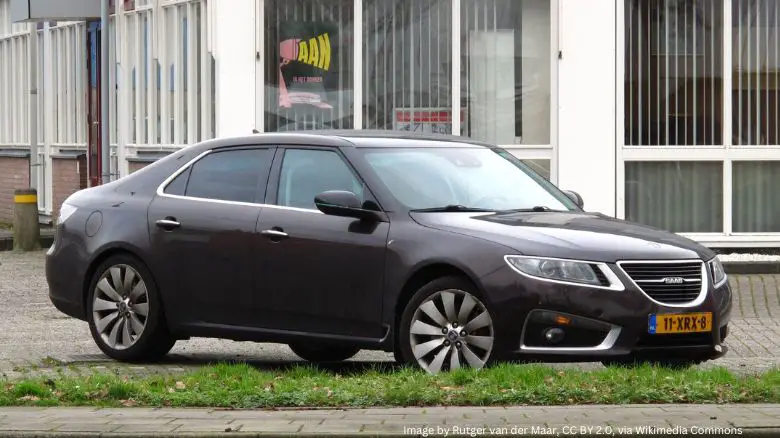
6. Insurance Costs
Insurance costs can vary, but given the rarity and potential value of a well-maintained 9-5 Aero, premiums may be higher than average.
Shopping around for insurance and exploring specialty classic car insurance options can help in finding the best rates, although given its age, classic insurance may not be offered.
7. Depreciation and Value
While the 9-5 Aero has seen relatively stable values with a slight decline in recent years, it remains essential for owners to maintain the vehicle in excellent condition to preserve its value, as with any potential investment vehicle.
This may involve additional costs but will be an investment in the car’s future value.
Is the Saab 9-5 Aero a Bold Bet for Investment?
As we throttle down and step out of the Saab 9-5 Aero, we find ourselves at a crossroads.
Is this Saab, a symbol of innovation and a relic of a bygone era, truly a ‘Bold Bet’ in the ever-shifting sands of car collection?
It’s a snapshot of Saab’s undying ambition. The car stands as a testament to Saab’s legacy, a piece of history that hints at what could have been, and of a future that never unfolded.
However, the voyage with the second generation 9-5 isn’t just a cruise through clear skies; it’s also a navigation through clouds of uncertainty.
The balance between risk and reward teeters on the edge of maintenance challenges, parts scarcity, and the unpredictable winds of market value.
Thankfully, the swathes of Saab fanatics across the globe, determined to keep the brand’s legacy alive, will always help with future challenges that potential owners may face. Their loyalty to Saab is unlikely to waver any time soon.
The 9-5 is a bold bet, a gamble with history, and an investment in a car that never took the world by storm. Partly because it didn’t get a chance to.
But that’s what makes it so unique. It’s a car that has gone under the radar (and I promise that’s the final aeronautic analogy), but one that holds undeniable allure and potential for those who seek the path less traveled.
The Saab 9-5 Aero will almost certainly become a classic and secure its place in the automotive history books.
ABOUT THE AUTHOR
Adam Chinn writes about the intersecting worlds of classic cars, driving pleasure, and smart investment strategies. Starting his journey at 26, he’s proven that one doesn’t need to be wealthy to begin investing in classic cars.
Adam’s insights have been recognized on platforms such as MoneyInc, Swagger Magazine, and Top Speed.

